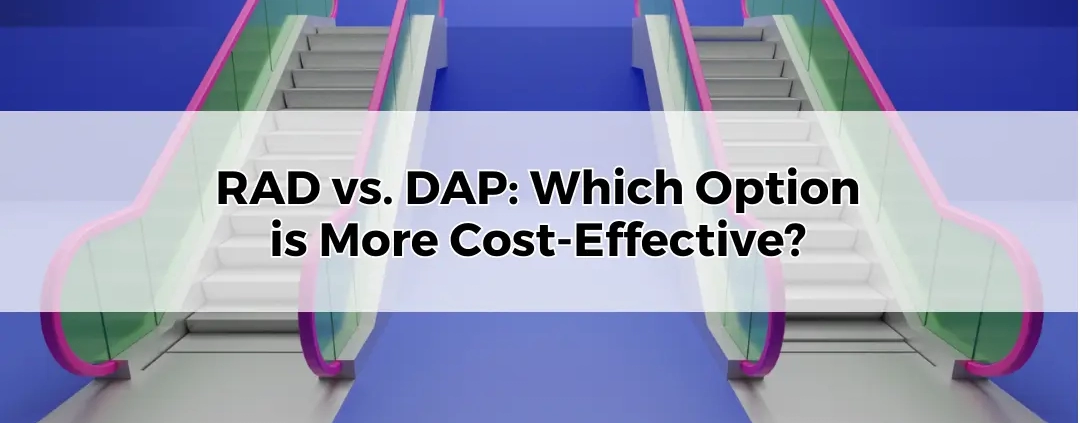RAD vs. DAP: Which Option is More Cost-Effective?
Table of Contents
ToggleAged care accommodation payments represent one of the most significant financial decisions for those entering residential aged care. The two primary methods of payment—Refundable Accommodation Deposit (RAD) and Daily Accommodation Payment (DAP)—offer distinctly different approaches to managing aged care costs. Selecting the right payment option can impact not only cash flow but also long-term financial health. Understanding the intricacies of each payment method is crucial for making an informed decision that aligns with personal financial goals and estate planning.
What is a Refundable Accommodation Deposit (RAD)?
The Refundable Accommodation Deposit, or RAD, is a lump sum payment made to an aged care facility. It acts as a security deposit, ensuring accommodation for the resident. The payment is held by the facility and fully refunded (minus any agreed-upon deductions for care costs) when the resident leaves the aged care home, whether through discharge or death. RADs are a popular choice for those who have access to sufficient liquid assets and prefer to secure their place in aged care without ongoing monthly payments.
What is a Daily Accommodation Payment (DAP)?
The Daily Accommodation Payment, or DAP, offers an alternative to the lump sum RAD. Rather than paying upfront, the DAP is calculated as a daily fee and is payable periodically—most often on a monthly basis. The amount of DAP is determined by the RAD equivalent, using a government-set interest rate to calculate the daily cost. This option provides flexibility for individuals who do not wish to—or cannot—pay the full RAD in advance, allowing them to manage their finances in a way that preserves liquidity.
The Main Differences Between RAD and DAP
At the core, RAD and DAP represent two contrasting methods of payment: one upfront, the other ongoing. A RAD involves a significant lump sum, while a DAP spreads the financial commitment over time. This difference impacts personal cash flow and liquidity management. Choosing between the two depends on an individual’s ability to access large amounts of capital, their desire for flexibility, and how much they value retaining control over their assets.
How RAD and DAP Affect Your Estate Planning
A critical consideration when choosing between RAD and DAP is how each option affects estate planning. Since RAD is fully refundable, it can be seen as a form of wealth preservation. Upon the resident’s passing or exit from care, the RAD is returned to the estate, offering an avenue for legacy planning. On the other hand, DAP payments are non-refundable, meaning that while they may suit cash flow needs, they do not contribute to preserving wealth for future generations. Understanding these implications is vital for individuals who wish to balance their current care needs with their long-term financial legacy.
Understanding the Refundability of RAD
One of the key advantages of the RAD is its refundability. Upon leaving care, the entire RAD amount is returned, often within a specified time frame. This refund can be directed to the individual, their estate, or their beneficiaries, depending on the circumstances. However, it is important to note that any care-related costs agreed upon, such as extra service fees, may be deducted from the RAD before it is refunded. This ensures that the resident’s accommodation is paid for, while also offering peace of mind that the majority of their deposit will return to their estate.
DAP Flexibility
One of the primary benefits of the DAP option is its inherent flexibility. Residents can adjust their payment structure over time, even converting from DAP to RAD if their financial situation changes. This adaptability can be particularly valuable for those who prefer to retain control over their assets early on and then switch to a lump sum RAD once other income sources become available. However, this flexibility comes with trade-offs, especially when it comes to the long-term cost of care, as DAP payments accrue interest.
The Cost-Effectiveness of RAD vs. DAP
Determining which option—RAD or DAP—is more cost-effective depends on several factors, including the individual’s financial situation, expected length of stay in care, and the current interest rate environment. In general, paying a RAD upfront can be more cost-effective in the long run, as it eliminates the ongoing interest charges that come with DAP. On the other hand, those who expect to stay in care for a shorter period or who need to preserve their liquid assets may find DAP a more viable option, despite its higher overall cost over time.
The Role of Interest Rates in DAP Calculations
Interest rates play a pivotal role in the calculation of DAP payments. The government sets a Maximum Permissible Interest Rate (MPIR), which is used to calculate the DAP equivalent of any unpaid RAD. As interest rates fluctuate, so too do DAP payments, meaning that the cost of choosing DAP can rise over time if interest rates increase. For this reason, those considering DAP must keep a close eye on the interest rate environment, as it can significantly affect the affordability of ongoing care payments.
When to Choose RAD Over DAP
In situations where an individual has access to sufficient funds, choosing RAD over DAP may be the more prudent option. A lump sum payment can reduce the overall cost of care by avoiding the compounding interest charges associated with DAP. Additionally, paying a RAD may reduce the individual’s assessable assets for government benefits such as the Age Pension, thereby improving their overall financial situation. This option is often favored by those with substantial assets who prefer to minimise ongoing financial commitments.
When DAP is the Better Option
For individuals who prefer to retain liquidity or who do not have access to large sums of capital, DAP may be the better option. By paying in installments, they can preserve their assets for other purposes, such as medical expenses or supporting a spouse. DAP also offers greater flexibility, as individuals can convert to a RAD at any time, should their financial situation improve. This approach is particularly useful for those with fluctuating income streams or who wish to maintain control over their investments.
Combining RAD and DAP
For many, the best approach may be to combine both RAD and DAP, creating a hybrid payment structure that meets their specific financial needs. By paying part of the accommodation costs upfront through a RAD and covering the rest with DAP payments, individuals can strike a balance between preserving liquidity and minimising overall costs. This tailored approach allows for greater flexibility, offering the financial advantages of a lump sum RAD while maintaining the control and adaptability of periodic DAP payments.









